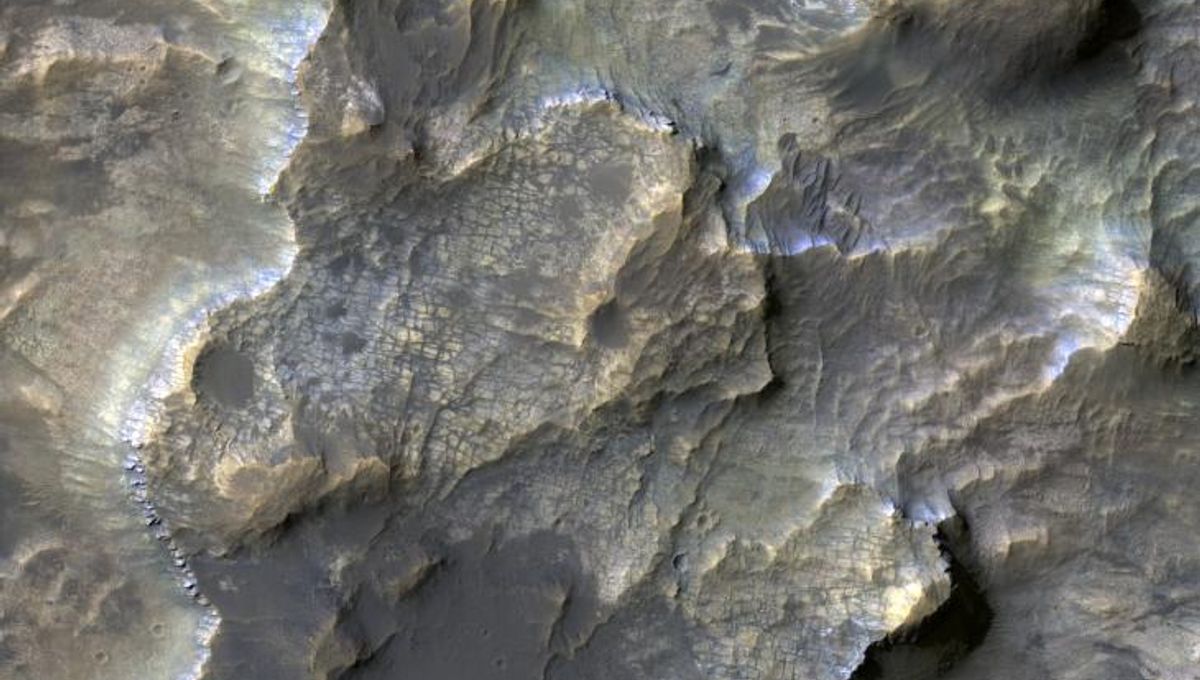
Mars and Earth are dramatically different planets. The complex and wildly different environments of our world are not comparable to the sandy frigid desert that is Mars today – but billions of years ago, the two worlds were a lot more similar. New research suggests that it was not just a superficial likeness but rather a deep one.
The picture currently painted of ancient Mars suggests a world with flowing water – although we are unsure if this was a constant or if the planet oscillated from a frosty globe to a world of rivers, growing lakes, and stormy seas. Mars also shook a lot more. It still has quakes, but they’re not as powerful as their earthly counterparts. It also used to have active volcanoes. The tallest one in the solar system, Olympus Mons, is on Mars. Now, only Jupiter’s Io and likely Venus have erupting volcanoes beyond Earth.
Planetary scientists rewound the clock for Mars by looking at the Eridania region. This area is interesting for many reasons. But chiefly, for this research, there are two main ones: It has portions of the Martian crust that still hold evidence of a bygone magnetism, and it has a lot of volcanic structures.
Using data from multiple orbital observers – among which are the Mars Global Surveyor, Mars Odyssey, and the Mars Reconnaissance Orbiter – the team identified 63 new volcanic structures in the Eridania region.
Those were divided into four broad categories. First are volcanic domes, protrusions created by the slow eruption of viscous lava. Stratovolcanos are similar but much larger. While the average diameter for domes is 14 kilometers (9 miles), stratovolcanos are typically between 40 and 80 kilometers (25 to 50 miles).
Even wider are pyroclastic shields, but they are flatter than the stratovolcanos. Finally, the caldera complexes show where dramatic eruptions blew away any preexistence volcanic structure, leaving behind a depression. Scientists believe that many more structures are out there to be found.
Extensive volcanism is already a lot more Earth-like – there are around 1,500 active volcanos on Earth with several dozen erupting every year, like the recent Iceland eruption. Yet, there is an even more intriguing suggestion in this work: The thickness of the crust in the area is much thinner than the surrounding regions.
The suggestion put forward in this research is that, around 3.5 billion years ago, Eridania experienced recycling of its crust. They believe this was caused by vertical tectonics – which is believed to be a precursor to tectonic plate activity here on Earth. No other planet is known to have tectonic plates like Earth does, although Venus might have shuffling crustal structures.
Some of the Eridanian volcanic activity was underwater, so the region might also offer an intriguing location that might have supported life, similar to the proposed scenario for the formation of life on Earth that sees seafloor and land-based hydrothermal vents as the place where the first lifeforms evolved.
A paper detailing this work is published in the journal Nature Astronomy.
Source Link: Young Mars Might Have Had More Earth-Like Volcanic Activity Than We Thought